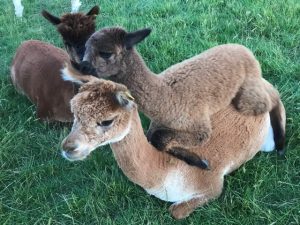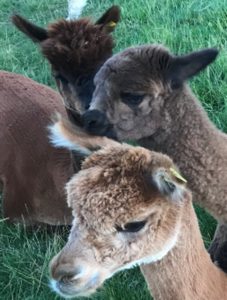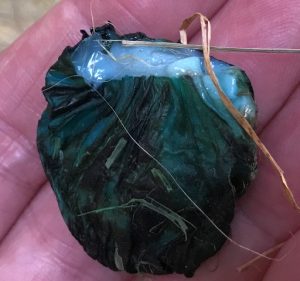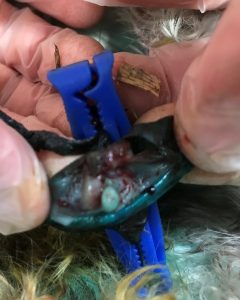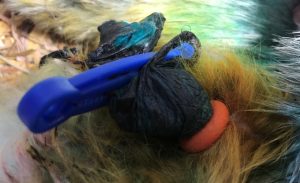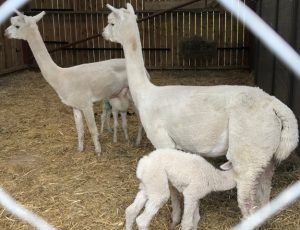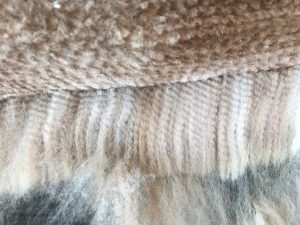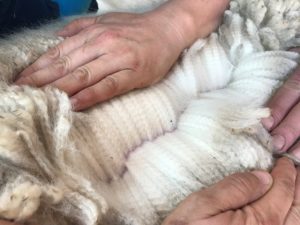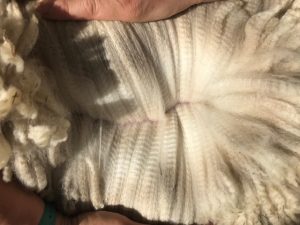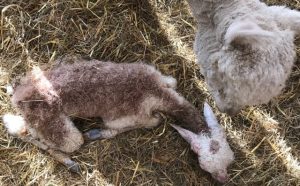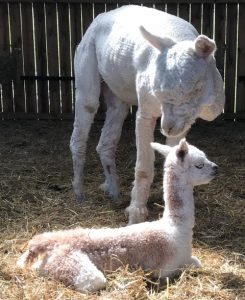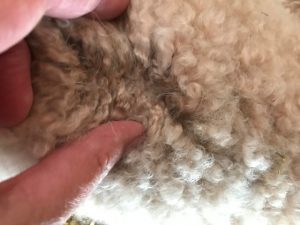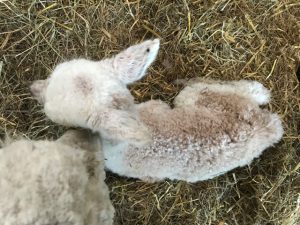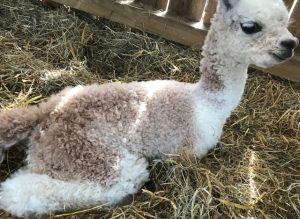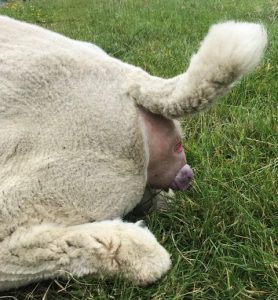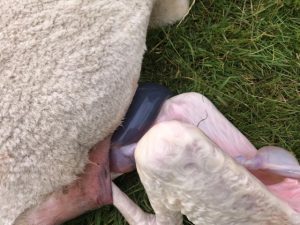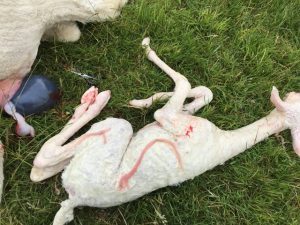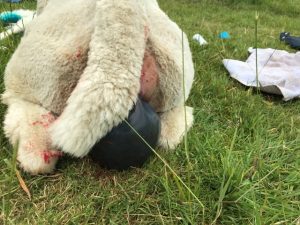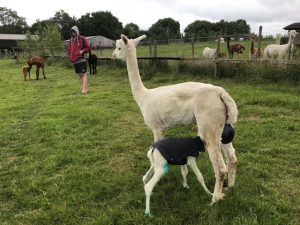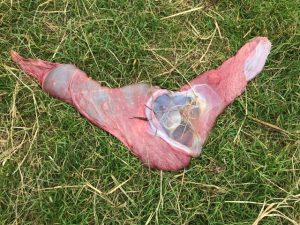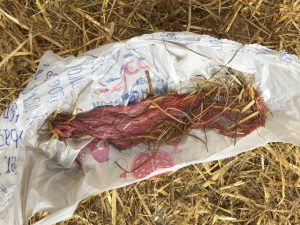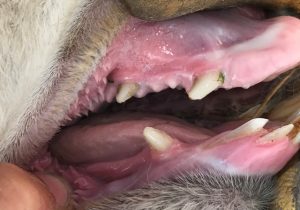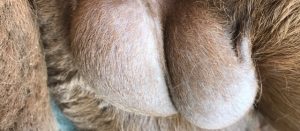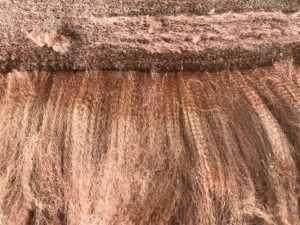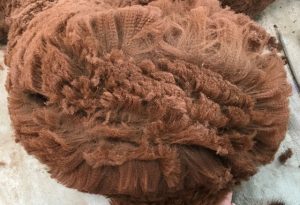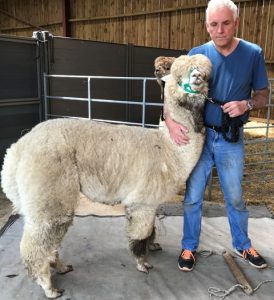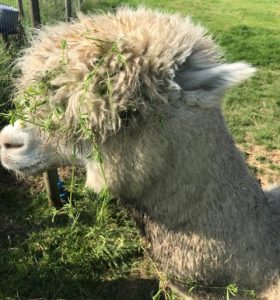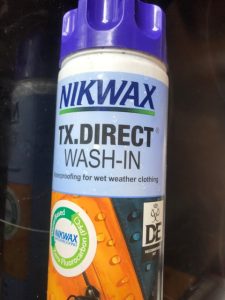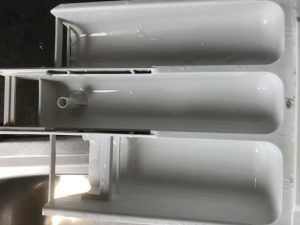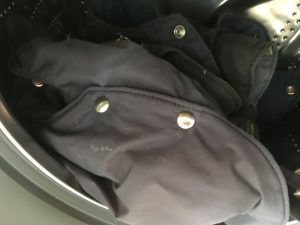Monthly Archives: June 2018
Cria orgling practice in full swing at Kensmyth, Clay Meadow
Dont read this post if you are squeamish – part 2 umbilical cord Alpaca cria
Please remember this post is put here not to shock but to show what can happen and how to deal with it
you will recall my previous post where the cria was coming out cushed and after getting the cria out, obviously I had to cut the cord. this is perfectly normal, as is a larger cord due to strain from difficult birthing.
so in Part 2, you see that the Cord has started drying – hand holding partial cut cord…
so we recall that the cria had a CLAMP put on at birth when the cord was cut and this although plastic and lightweight is nevertheless cumbersome and a risk for catching… so as the cord dries out, it is always better to remove the Clamp as soon as practical and sensible. ALWAYS have several cord clamps in your birthing box.
This takes real skill and guess work. you also need to be prepared for the fact that it may still cause a bleed and need putting back on – very quickly. They are not the easiest things to work with either.
So, after an appropriate time (at least 24 hours plus), a clamp removal was attempted with “stand by” assistance.
the Clamp is removed and the cord sprayed with iodine spray / antibiotic spray where it was. a small amount of blood should congeal when laid down. Then you permit the cria to stand. if blood drips immediately, then the clamp needs to go back on FAST. obviously all blood in any weather, let alone this weather should be immediately cleaned to prevent flystrike.
Clamp on showing insides and hoping dried above clamp…
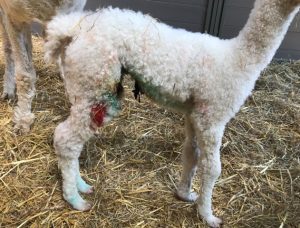 clearly it needed more drying time as bled again SO in order to prevent a potential HERNIA by having the clamp on an umbilical cord hanging down ..
clearly it needed more drying time as bled again SO in order to prevent a potential HERNIA by having the clamp on an umbilical cord hanging down ..
LAMB RING the top after checking no intestines caught… leaving both CLAMP and LAMB RING to fall off naturally
Happy Cria all the time, blood washed off and exclusive night in before going out again just to ensure no issues.
don’t forget the ANTIBIOTIC to prevent infection
Please remember this post is put here not to shock but to show what can happen and how to deal with it
Reliable routine and beauty in the Cotswolds
One instinctively knows when something is right, Kensmyth, Clay Meadow
most readers following this will know that Colour predictions in horses was a speciality of mine, even getting down to white socks and blazes!
Well, Alpaca colour predictions are more “random” because the interpretations of colour in people who register their Alpaca is different and often patches are forgotten because they are “allowed” if the blanket is one solid colour in the fleece of an Alpaca.
So when Blogging about mating last year, I put on there that I had experimented this year with some and that I was hoping for some “secrets too”.
Well, about 3 am today a female whom I had waited a long time for (home bred) gave birth to what I had really been hoping for. Several weeks late of course and a Maiden but 4 years wait was totally worth it for the gorgeous boy she produced for us.
White fleeces on large Alpaca are our speciality but we do not venture to compete with the Black Breeders of the Alpaca industry, rather we reproduce what we know IS our speciality – top fleeces from top Alpaca that are large and so the fleeces can do so much.
One Alpaca was mated (one year) and gave birth to a white daughter which we waited to mate (two years more) and her gestation ended today (one year) so a total of 4 years waiting for this boy – our MINI ME!
Most Alpaca breeders would not jump for joy at his production because although SPOTTY he is also deemed a Fancy or Multi in the Alpaca world BUT the fleece on him is exceptional as is his mothers (white) and Grandmothers (same colour)
Here is the Grandmother at pre shearing with her obviously solid white cria and then post shearing showing her fab fleece:
and here is her SOLID WHITE daughter with our best ever prediction today.
How did I manage that folks… now THAT would be telling!!
he even has his Grandmums spots – MARVELLOUS
one instinctively knows when something is wrong… Kensmyth, Clay Meadow
A lifetime of farming teaches you how to “know” your livestock. When you are with them 24/7 you understand more than “gut” feelings and often the animals do too. When something is wrong, if you know them it is easy to spot but not often easy to rectify.
This female is a Maiden, very big but was mated by a smaller Stud boy as I knew the line throws humungous cria.
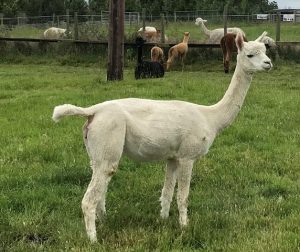 I have put this Blog up here for those who think Alpaca birth in the morning and that it is a 15 minute easy process. Rest assured it is not.
I have put this Blog up here for those who think Alpaca birth in the morning and that it is a 15 minute easy process. Rest assured it is not.
This female started at 4 am and I managed to get the cria out at 4pm the next day. Most would not see the very first signs and it is these that if you miss, you do not know when precisely to intervene.
I know my Alpaca so well that they will often come and birth by me and the birthing kit.
I knew it was not looking good by the length of time to dilate
We have a “CODE RED” call in our house and I summoned Mitchell so that I could have a “feel” to see what was wrong inside.
Unfortunately, the cria inside was literally kneeling in a cushed position with both knees and head trying to come through at the same time.
It is an impossible situation and I want to thank my friend who guided me through on iPhone speakerphone because it requires someone knowledgable at the other end for moral support when the Vet is too far away.
This was my Fathers Day folks…
obviously there is a massive time lapse in these photos and the next are not for the faint hearted…
I had to go in with one hand, obviously well cleansed and lubricated and inch by inch slowly push the head and shoulders back until I could get a second hand in to enable a “hold”. clearly this is high risk as you are pressing on the neck of the already externally breathing cria. it is save one, both or none time in these situations.
With Mitch sterlingly calming the Mum to be of which he has many years experience, I gently managed to ease the cria out – at which point you are hoping that nothing else follows. This is such a serious exercise that if done too quickly you can cause prolapse, the whole womb to come out and no guesses for what happens to the mother in those situations.
I cut the cord, clamped it, dealt with the cria and then it is a waiting game to see how Mum is. Mitchell keeping her calm and cushed for as long as possible. During which time she received antibiotic and pain relief injections from me.
clearly the situation has to be kept calm and is not for those without serious patience and knowledge
the sheer weight of the placenta can bring more out and the mother needs the cria at her head to give her the strength and will to live in these situations
but it does have a happy ending…
keeping the other mums at a distance for several hours until mum is able to be gently walked to the barns after passing the placenta takes time because everyone wants to see the new arrival
when the placenta is passed, unsurprisingly it is not “full” so danger is by no means over
CCTV watching and monitoring all night reveals the passing of the second part of the missing horn
but the next instalment of this particular birthing will cover the CORD on the cria
do not think in these situations that its all done and dusted at this point – back soon!
Happy Fathers Day Dads and to all Farmers from Kensmyth, Clay Meadow
Happy Fathers Day Dad
– you know I would love to be with you today and share with the family but as a Farmer we look after our livestock first and foremost.
We miss Family events (unless held here) all year round but it is our love of the livestock and countryside that keeps us going.
Here are some beautiful flowers that smell wonderful, like your aftershave DAD.
Alpaca breeding at Kensmyth for Colour and Size, Clay Meadow
Kensmyth is renowned for its stunning Alpaca fleeces on large well bred Alpaca but not for its colour as we keep our products Natural. We have dabbled a little in natural dyed yarn but decided to breed a few more coloureds in the past few years and boy are we pleased with the results
great coloured fleeces, well hung stud boys, long staple length and large Alpaca but never forget they have fighting teeth folks!
Shearing second herd at Kensmyth, Clay Meadow
most folks know we have soo many Alpaca now that we have to shear in batches. it makes life easier for skirting the fleeces I have to say. But the Mud Monsters certainly turned into Princes again after LOL
and whilst they need barns for shade and protection from cold or sunburn when first shorn, especially pregnant mums… our after shear protection is a nice bottle of wine LOL
Helens favourites at Kensmyth, Clay Meadow
ready for the next cria drop at Kensmyth, Clay Meadow
as the cria outgrow the little coats – only used for premmie cria or very wet days, they need to be washed and re waterproofed. it is essential to use the correct waterproofing liquids but more important to clear the washing machine liquid container first…when washed, spray and leave to dry. let them into fresh air or they will smell horrible and the mothers might not like the smell when put on. pack outside to outside.
